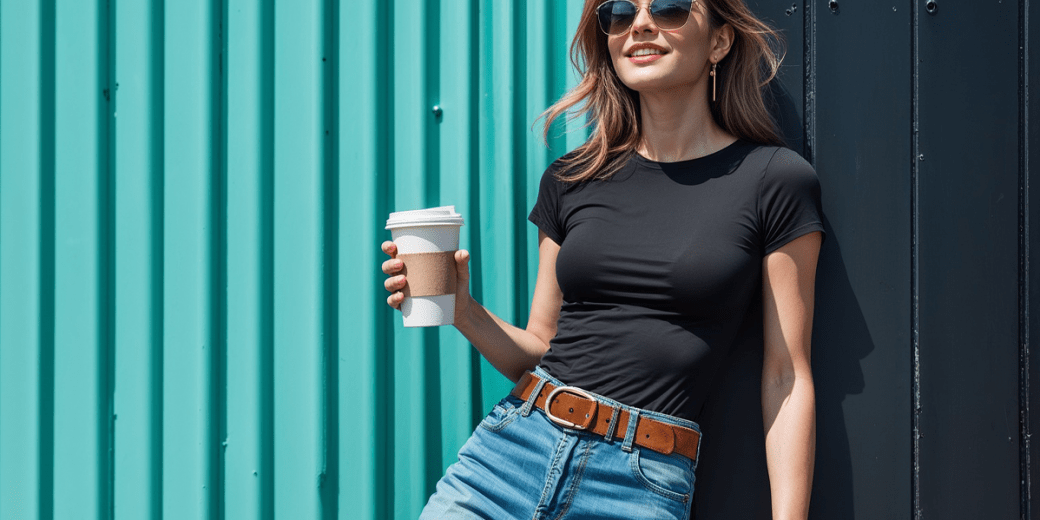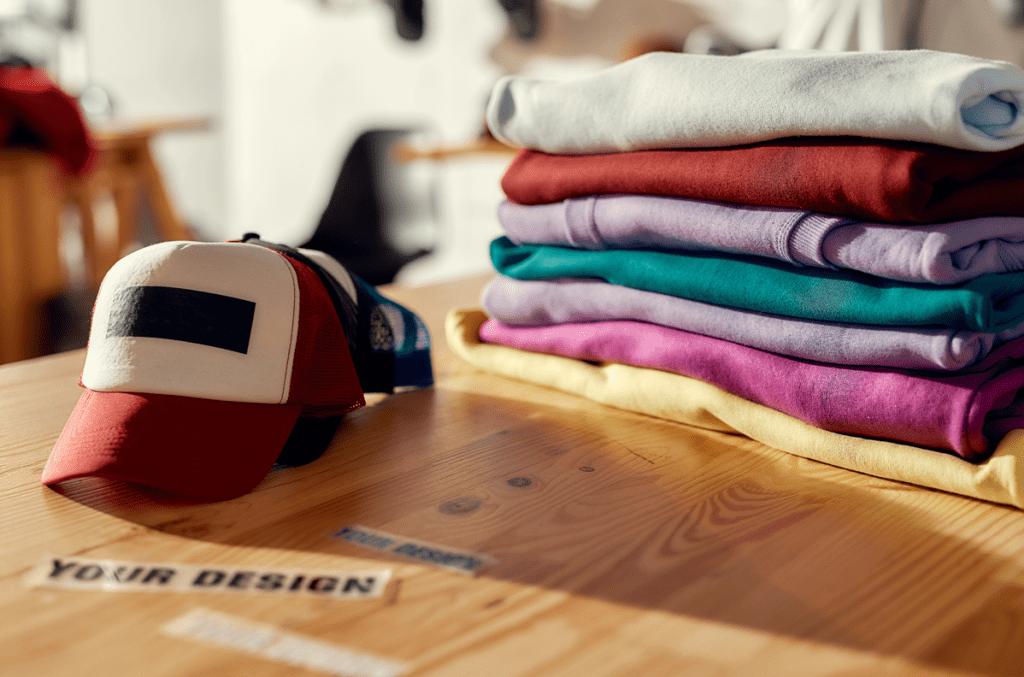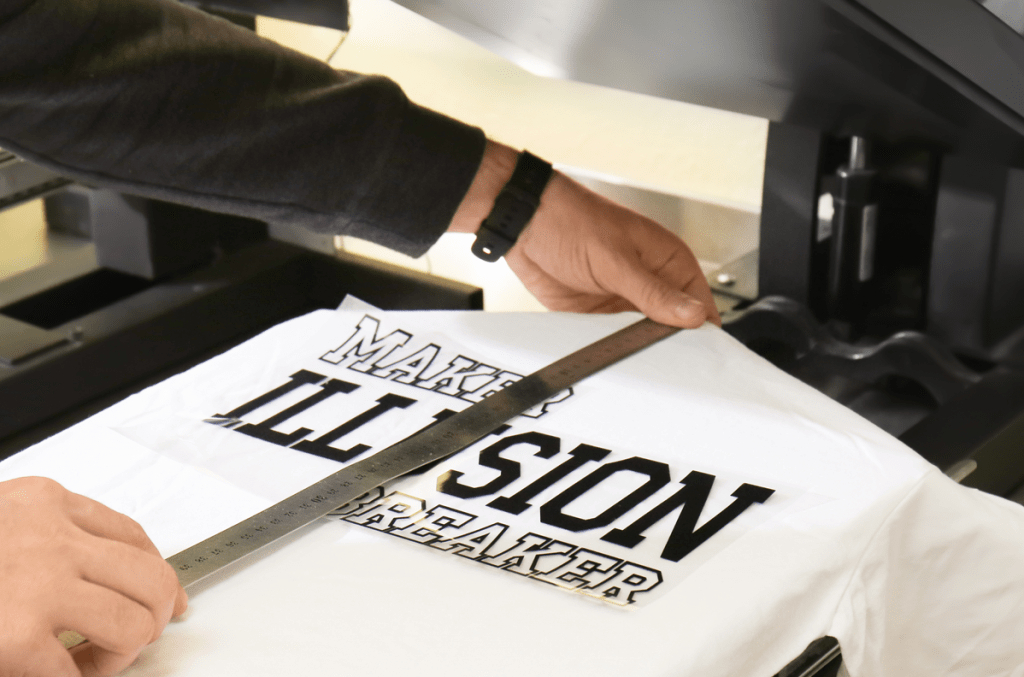6 of the Best Types of Shirts To Print On

In the world of merchandise and t-shirt printing, quality and style are what matters most.
Your customers want gear that not only looks cool but feels great as well, but when you’re trying to order things online or use a drop shipping service, you don’t always get this in-person experience that lets you touch the garments for yourself.
So, what are the best types of shirts to print on?
If you are starting your own clothing line, you’re looking for a quality material that will hold a design well. The most popular options are cotton, polyester, and rayon but there are many different ways they’re used to make a shirt.
From a print-on-demand point of view, cotton is the fabric we prefer to use. The print on demand technology that prints onto polyester garments is limited at this time. Where the only option is dye sublimation, which is more suited to bulk production.
In turn, all the different fabrics have something different to offer – in quality, fabric consistency, weight, and transparency -all of which have to be weighed up when choosing the right material for the garment.
To guide you through the overwhelming decision of which shirt material is best, we’ve compared some of the more popular options and what they have to offer in these categories.
You’ll walk away knowing exactly which shirt is best for your business without ever having to feel it for yourself.
The Best Fabrics to Print On For Shirts
There’s more to creating a garment than just choosing a cool design. Your going to need a quality base to begin the process.
A t-shirt is only as good as the material it’s made out of, though, so we’ve weighed up some of the most popular types of shirts to print and compared the key categories so you can choose one that will help your brand stand out.
100% Polyester
What is it: Polyester was invented in 1941 is a man-made fibre that’s been sourced from petroleum-based products. The overall feel of the material is soft but it’s also known for being durable and long-lasting and is becoming a popular choice in the garment industry.
Pros
- Polyester is a durable material and will last for many years. Its durability also means it’s less susceptible to stains so you’ll be able to keep it in good condition even if it gets dirty.
- This material will keep its shape for a long time and won’t shrink and fade like others. You can wash it as you would your other clothes without any special care instructions to follow and it’ll still look just as good.
Cons
- Printing on polyester is harder to do than on cotton, which means the process is more expensive to get it right. If you’re looking for budget-friendly but good quality, it’s not the most ideal.
- Many printing processes and dyes won’t work as well on polyester, so although it’s a good basic tee to have, it won’t make the design pop as much if it’s got something printed on it.
100% Cotton
What is it: Cotton is a natural fibre and the most widely produced on earth, and with good reason. The material is versatile and used to make all kinds of garments, bedding, and other household goods. Cotton can come in a standard form or any number of styles depending on how it’s spun, and all of them are suitable for printing.
Pros
- Plain cotton t-shirts are the perfect material for printing on, and this includes screen printing, DTG, and heat transfer.
- Cotton is an affordable and easily accessible material to work with so you can keep prices low while still offering a quality garment.
- The feel of cotton is soft but breathable and it’s a good choice for those in warmer climates as well because it keeps the skin cool.
Cons
- Not all cotton garments are created equally so you’ll need to make sure you choose one that’s known for its quality. In addition to the process used to prepare the cotton, it can also be sourced from different places, and fluctuate in price and quality.
- Cotton may shrink faster than its synthetic counterparts so when compared to something like polyester, it might not hold its shape for as many years.
100% Cotton – Combed Cotton
Perfect for print-on-demand
What is it: Combed cotton is considered a premium cotton variety and is made by removing the short fibres so that only the longer ones are left, which are then arranged to create a high-quality yarn. This material is sometimes used for premium t-shirts and can be printed using a variety of methods, but usually left for higher-priced garments.
Pros:
- The look and feel of combed cotton are recognisable as a premium fabric and feels different from a regular shirt. Having a basic t-shirt made out of this will boost its price and quality instantly.
- Although softer, combed cotton is still durable, and a shirt constructed of it will be able to stand the test of time with minimal fading and wear.
Cons:
- The process that this cotton goes through makes it more expensive and if you’re trying to print merchandise that’s affordable for customers, it’s likely out of their reach.
- Combed cotton is more prone to shrinking than other kinds and should only ever be washed in cold water. Even the slightest exposure to heat will change its construction so it requires extra care.
100% Cotton – Ring-Spun Cotton
What is it: Ringspun cotton is another form of this natural fibre that’s sometimes used to make t-shirts and other garments, and is able to take on most forms of printing with great results. The process used to make it means the cotton undergoes frequent spinning and twisting so that it’s woven more tightly, but with softer and thinner cotton strands.
Pros
- The feeling of a t-shirt made of ring-spun cotton will be softer and more breathable, so it’s more of a luxurious feel compared to regular cotton.
- This is a durable material that can take a beating and is resistant to many types of stains. The tighter and longer cotton strands used to make them mean they’re tougher than most.
Cons
- The process of spinning cotton adds more to the overall price, so a basic t-shirt could cost a little extra. However, it’s a popular mid-range choice for tees even if it’s more expensive.
- Washing a ringspun cotton t-shirt requires some extra patience as it can’t come into contact with heat. Cold water and line drying are the only ways to keep it clean without shrinking or damaging it.
Poly-Cotton Blend
What is it: A poly-cotton blend combines the synthetic fabric polyester with the natural fibres of cotton, hoping to give the best of both worlds. The fabric is made with a yarn of cotton and yarn of polyester, spun together to create it. These shirts work with sublimation printing best, but also DTG and heat transfer, but not as adequately.
Pros
- A shirt made of poly cotton is cost-efficient and even more so when purchased in bulk. The printing process is easy and so is the way the fabric is manufactured which is a bonus for merchandisers.
- This fabric has a good level of colour retention so the shirt underneath your printed design will keep its looks for longer. Better still, it’ll do this without any extreme care instructions and won’t shrink as easily as pure cotton.
Cons
- In terms of safety, these shirts are less flame retardant than other materials. You’ll need to be careful where you wear them and avoid any kind of open flame or excessive heat.
- A poly-cotton blend isn’t considered the highest quality, especially when compared to other types of spun cotton. Although it’s cheaper and holds its colour well, it’s also not going to last as long and might need to be replaced sooner.
Tri-Blend

What is it: A tri-blend fabric is made of three materials and usually with 50% polyester combined with 25% cotton and 25% rayon. This type of material is common in DTG printing but doesn’t work as well with other methods, although it’s a smart, cost-effective solution if you’re trying to create on the cheap.
Pros
- The cost of making a tri-blend t-shirt is a lot cheaper when you use this base. The price comes down even further when it’s made in bulk.
- The feel of a tri-blend shirt is soft and it drapes easily over the body for a comfortable fit. It’s a breathable fabric so you can wear it comfortably in all climates without feeling smothered.
Cons
- In terms of quality, a tri-blend shirt isn’t as long-lasting or durable, and you’ll likely start to notice the colour fading and the designs looking less vibrant over time.
- The softness of these shirts might start to wear down and it can feel thinner, which leads to transparency. After some time and regular washing, the shirt might become see-through.
Choosing the Right Style of Shirt
Once you’ve selected the material, you’ll need to think about the type of shirt you want to print on. These are some of the options that work best from basic merchandise if you want your design to pop:
- T-shirt: The standard t-shirt is a popular choice for branded goods. This garment allows you to display the design without interruption, they’re usually cheap and go well with a range of other garments so there’s plenty of ways to wear them.
- Raglan: A raglan shirt is one with sleeves that extend to the collar and neckline, with the sleeves usually being a different colour to the rest of the shirt. Like a t-shirt, it has an uninterrupted canvas to print on but the advantage of colour combinations that can make a design pop.
- Singlet/tank top: A single is a good option for keeping cool in warmer climates and is simple enough that they help the printed design to stand out. There are usually both men’s and women’s styles available with the women’s being more fitted than the other.
- Hoodie/jumper: Hoodies are a popular choice for printing on because they offer something for colder weather and are a unisex garment. The materials used to make a hoodie are usually a cotton jersey mix and the feel is different from other t-shirts.
The Perfect Garment for Printing

Even with the coolest design and best printing equipment at your disposal, a shirt that’s made of the wrong material just won’t do.
This part of the process is imperative to getting the whole thing right, so make sure you choose a material that’s designed for printing and one that’s going to deliver on quality and colour for your customers.
Related Questions
The material you choose for your merchandise and printed tees will determine their quality, look, and feel, so you want to take your time and get it right.
If you’re still trying to figure out the basics of your branded goods and need a little direction, we’ve got some FAQs and expert answers that might be able to help.
What Are the Best Colours for Printed T-Shirts?
The colour palette of your printed tees needs will depend on what’s being printed on them and how well these colours combine or if they clash.
For a bolder design, choosing a neutral colour t-shirt like white, black or grey is good, otherwise, you can combine a brighter coloured shirt like red or orange if the planned design isn’t as bold.
How Can You Tell the Quality of a Shirt?
The easiest way to tell the quality of a shirt is through touch but if you’re unable to feel it yourself, looking at its materials and construction are other ways.
Higher quality fabrics like cotton and how they’re prepared or woven, the thread count, and the type of dye used to colour them can all give you an indication of the worth of a shirt.
